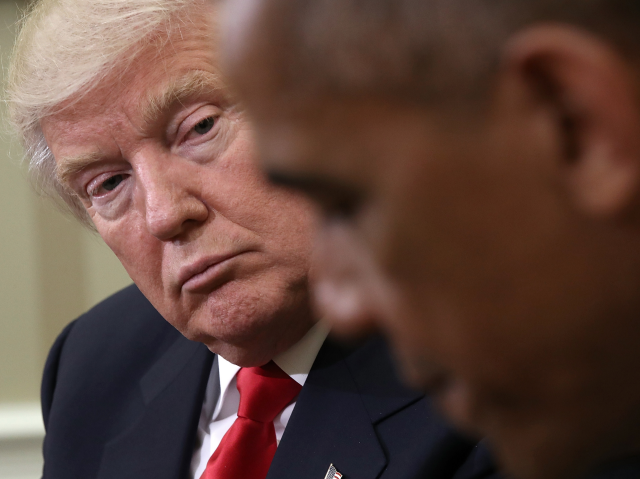On Saturday morning, President Donald Trump took to Twitter to point out a fact he thought the media was underreporting: the decrease in the national debt in his first month.
“The media has not reported that the National Debt in my first month went down by $12 billion vs a $200 billion increase in Obama first mo[nth],” tweeted Trump.
The tweet, which echoes something Herman Cain said on Fox News’ Fox & Friends an hour before, doesn’t make sense for a few reasons.
First, it is true that the debt has probably ticked down but as noted by the Atlantic’s David Frum, this is mostly due to the federal government rebalancing its intra-governmental holdings. Debt outstanding to the public has barely budged since Inauguration Day.
Additionally, the federal government is still operating under the budget passed before Trump came into office, so even if the overall debt decreased, his administration had little to do with it.
Finally, and most importantly, the economic circumstances during his and Obama’s first month in office are vastly different and make the comparison totally off base.
When Obama took office in January 2009, the country was in the midst of the worst financial crisis since the Great Depression. The US economy lost 702,000 jobs in February 2009 and 832,000 in March 2009, GDP growth collapsed, and foreclosures soared.
In response to this crisis, Obama did what presidents typically do during recessions: took on debt to stimulate the economy.
In the depths of a recession, private investment collapses. So, generally accepted economic theory concludes that the government should induce investment and step in during these times of crisis to prop up the stumbling private sector.
Thus, both Obama and his predecessor George W. Bush signed into law bills to inject large amounts of capital into the economy to both save the financial sector and get people back to work.
For instance, Bush passed the Toxic Asset Relief Program in October 2008 which used just over $426 billion in federal funds to “bail out” the country’s largest banks. Obama signed the American Recovery and Reinvestment Act in February 2009 which allocated $831 billion in federal funds to finance investment projects such as infrastructure.
By contrast, Trump has inherited — as he even noted — a country with a vastly improved economic standing.
The labor market has improved drastically, with unemployment at just 4.8% and the number of people claiming unemployment benefits nearing the lowest point in 40 years. In fact, during Obama’s term the US added over 11 million private sector jobs.
Things outside of the labor market are pretty solid as well. Corporate profits have recently dipped below all-time highs and the stock market has soared more than 225% from its bottom in March 2009, and the housing market is growing again.
While it’s not all perfect — business investment is lagging, wages still haven’t hit pre-crisis levels, and economic gains have not been equally distributed throughout the country — there is no doubt that Trump inherits a better economic starting position than Obama did in 2009 with no reason to spend massive amounts of federal money to assist the economy.
Trump even noted these differences in a follow-up tweet.
“Great optimism for future of US business, AND JOBS, with the DOW having an 11th straight record close,” tweeted Trump. “Big tax & regulation cuts coming!”
While some of the increase in the confidence indexes have come after the election, much of the economic good news was around before Trump took office.














